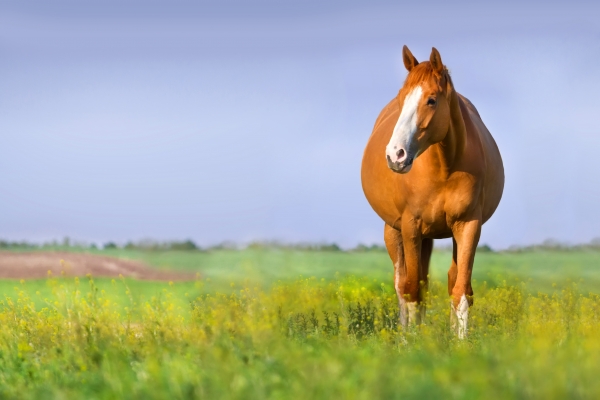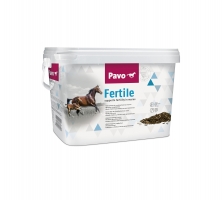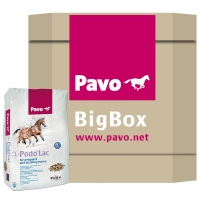|
Advice article filter
|
Mare that does not go into foal: causes and solutionsA mare that does not go into foal can be a very frustrating and complex problem. The problems that occur in difference stages have a substantial influence on the success of breeding. But why does my mare not go into foal? And how can I create the ideal circumstances for my mare? Why does my mare not go into foalThere can be several reasons why a mare does not go into foal immediately. Problems can occur in three different stages: not going into foal at all, early embryonic death, and abortion. Several things can influence a mare going into foal:
A mare is fertile from eighteen months. The older the mare, the less chance she will go into foal. Problems with the reproductive system are mainly due to the shape of the reproductive system, cysts and inflammation. Management during gestation is important. A mare’s condition is very important and has direct influence on her fertility. By having an optimal environment for your mare, it will increase the chance of good fertility and a successful gestation. A mare’s cycle can even stop if her diet is bad or if the mare is exposed to too much stress. Stress during the gestation period may also lead to early embryonic death. Other causes of early embryonic death are an insufficient production of progesterone (the pregnancy hormone), abnormalities in the uterine wall, such as inflammation and insufficient intake of nutrients (for example due to cysts or damage to the uterine wall). Foetal mortality, also known as abortion, can occur with twin pregnancies, abnormalities of the umbilical cord, premature releasing of the placenta, fever of the mare and infection. Create the ideal environment for a mare in foalBy creating an optimum situation in the stable, you can increase the chance of pregnancy for your mare. Think of:
In addition, the following vitamins and minerals can have a positive influence on the fertility of the mare:
The food supplement Pavo Fertile contains, among other things, the substances mentioned above and thus can support the fertility of the mare and also ensures that the mare shows when it is in heat more clearly. Ideally, mares in foal are kept in herds in a field. Grass contains the ideal nutrients for mares. Roughage is less ideal as it contains less protein, minerals and vitamin E. A shortage of protein is disastrous for a mare because proteins are essential to the growth of cells and tissues. Especially in the last months of pregnancy, protein is important for the development of the foal. However, it is also important that the mare does not use up its own reserves. A shortage of protein can also cause a reduced milk production during lactation. A lack of vitamin E increases the chance that the placenta is retained after birth. Although in the first eight months of gestation a mare’s normal diet is sufficient, in the last three months the pregnant mares’ nutritional needs changes significantly because the foal experiences a growth spurt. Therefore, in order to provide the mare with all her needs, it is advisable to keep the mares’ energy level up with concentrate feed. Problems may arise when there is a deficiency. The mare pellet Pavo PodoLac contains all the necessary vitamins, minerals and trace elements for optimal growth and development of the foal. Fertility research for maresThe vet can be called to inseminate when a mare clearly shows signs of being in season. Initially, the vet will review the breeding and medical history of the mare and assess the reproductive organs. To assess the reproductive organs, both internal and external examinations will be made. During the external examination the vet will examine the position and closure of the vulva. Discharge from the vulva may indicate an already present inflammation. When a vulva does not close properly, there is a chance that the mare will suck in air. This allows bacteria to enter and can cause inflammation in the uterus. If a Mare sucks in air through the vulva, it will need to be closed by a veterinarian. The internal examination consists of a rectal exam and an ultrasound. During the rectal exam, the muscle tension in the uterus, the cervix and the follicle(s) on the ovaries are checked. During an ultrasound check, the veterinarian checks whether fluid or cysts are present in the uterus and possible follicles are measured. A horse can be inseminated when the follicle is big enough, it is soft to the touch and the horse has a relaxed cervix. It can occur that there is fluid in the uterus. Causes may be: bacteria/ fungi or yeasts in the uterus, overreaction after covering a mare or an allergy. These problems can be tested by doing a swab or a biopsy. Fluid in the uterus is treated by a veterinarian administering oxytocin or an antibiotic or rinsing the mare. Cysts in the uterus can be caused by a nutrient’s deficiency, however they can be burned away by a vet. Good feed management is therefore very important! Do I have a problem mare?When a mare, after a few attempts, does not go into foal or will not stay in foal, then she is called a problem mare. This can have many different causes. It is therefore wise to get into contact with your vet and to draw up a plan of action together. Stimulate a mare into heat with Pavo FertileThe supplement Pavo Fertile provides all the support needed to promote the fertility of a mare. It is designed to initiate the cycle and contains all the necessary substances for the preparation of a healthy egg cell development. It is especially suitable for mares that do not show when they are in heat clearly. |




